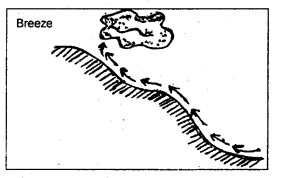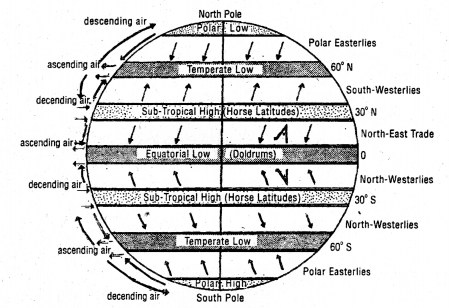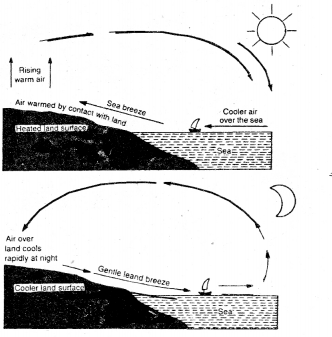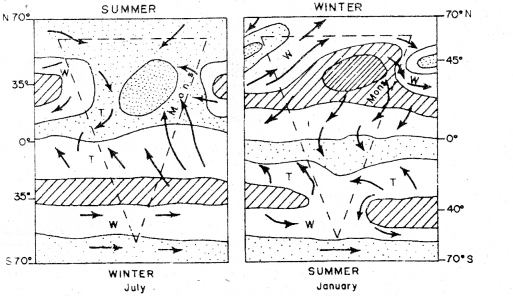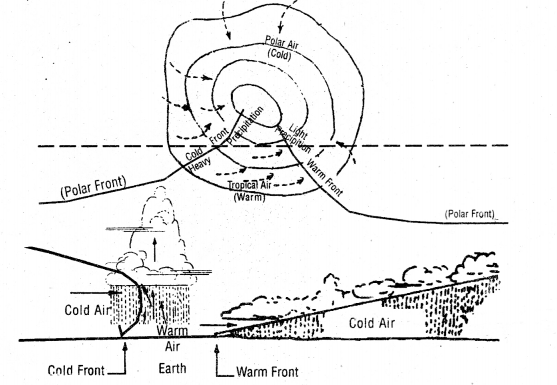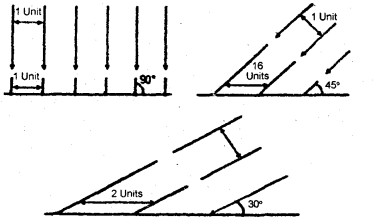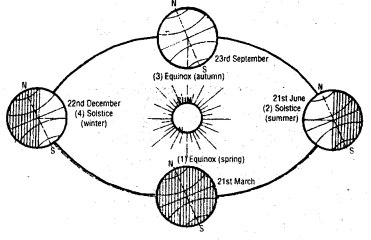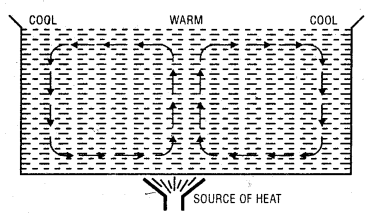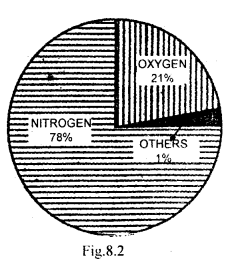Here we are providing Class 12 Hindi Important Extra Questions and Answers Vitan Chapter 3 अतीत में दबे पाँव . Important Questions for Class 12 Hindi are the best resource for students which helps in class 12 board exams.
अतीत में दबे पाँव Class 12 Important Extra Questions Hindi Vitan Chapter 3
प्रश्न 1.
हड़प्या शहर के साक्ष्यों की पूर्ण रूप से प्राप्ति क्यों नहीं हो पाई है ?
उत्तर
हड़प्पा शहर के अधिकांश साक्ष्य रेल लाइन बिछाने के दौरान पूरी तरह से नष्ट हो गए थे। वे आधुनिक काल के विकास की भेंट चढ़ गए हैं।
प्रश्न 2.
मोहनजोदड़ो शहर की व्यापकता के विषय में लिखिए। (C.B.S.E. Delhi 2013, Set-II, III)
उत्तर
मोहनजोदड़ो शहर अपने समय में बहुत ही बड़ा रहा होगा। लगभग पाँच सौ वर्ष पहले यह आज के ‘महासागर’ से भी बड़ा रहा होगा। यह शहर दो सौ हेक्टर क्षेत्र में फैला हुआ था और इसकी जनसंख्या लगभग पचासी हजार थी। यह घाटी भी सभ्यता का केंद्र रही होगी।
प्रश्न 3.
मोहनजोदड़ो कहाँ बसा हुआ था ? इस शहर के नाम का अर्थ क्या है और इसे अब किस नाम से पुकारते हैं ?
अथवा
मोहनजोदड़ो का शाब्दिक अर्थ क्या है? यह कहाँ स्थित है? (A.I. C.B.S.E. 2014, Set-I, II, III)
उत्तर
मोहनजोदड़ो पाकिस्तान के सिंध प्रांत में स्थित पुरातत्विक स्थान पर बसा हुआ था जहाँ कभी सिंधु घाटी सभ्यता थी। ‘मुअनजो-दड़ो’ का शाब्दिक अर्थ है-मुदों का टीला। वर्तमान में इसे मोहजोदड़ो नाम से पुकारा जाता है।
प्रश्न 4.
मोहनजोदड़ो कहाँ बसा हुआ था ? इसे विशेष प्रकार से क्यों बसाया गया था ? यह क्यों प्रसिद्ध है? (C.B.S.E. 2011. A.I. C.B.S.E. 2011 Set-1, 2012. Set-1)
उत्तर
मोहनजोदड़ो सिंधु घाटी सभ्यता के समय छोटे-मोटे टीलों पर बसा हुआ था। ये टीले प्राकृतिक नहीं थे। ईंटों से धरती की सतह को ऊँचा उठाकर इसे बसाया गया था। इसे टीलों पर इसलिए बनाया गया था कि बाढ़ आदि के कारण सिंधु नदी के जल से इसे बचाया जा सके। यह अपनी ऐतिहासिकता और सांस्कृतिक प्रतीक होने के कारण प्रसिद्ध है।
प्रश्न 5.
वर्तमान में सिंधु घाटी सभ्यता को किस रूप में देखा और महसूस किया जा सकता है ?
उत्तर
वर्तमान में सिंधु घाटी सभ्यता को इसकी सूनी पड़ी गलियों-सड़कों पर घूमकर देखा जा सकता है। इसकी टूटी-फूटी दीवारों, खंडहरों, घरों, दहलीजों, सीढ़ियों, पायदानों आदि को देखा और महसूस किया जा सकता है। इसके माध्यम से इतिहास के पार झाँका जा सकता है।
प्रश्न 6.
मोहनजोदड़ो के अवशेष कितने पुराने हैं ? इन्होंने भारत को प्राचीन सभ्यताओं की किस श्रेणी में ला खडा किया है ?
उत्तर
मोहनजोदड़ो के अवशेष ईसा पूर्व के हैं। इसके सबसे बड़े चबूतरे पर बने बौद्ध स्तूप में छब्बीस सदी पहले की ईंटें लगी हुई हैं जिसमें भिक्षुओं के भी कमरे है। इस खोज ने भारत को मिस्र और मेसोपोटामिया (इराक) की प्राचीन सभ्यताओं के समकक्ष खड़ा कर दिया है।
प्रश्न 7.
इस आदिम शहर की सभ्यता-संस्कृति की अधिकांश वस्तुएँ अब कहाँ हैं ?
उत्तर
इस आदिम शहर की सभ्यता-संस्कृति से संबंधित वस्तुएँ अब कराची, लाहौर, दिल्ली और लंदन के संग्रहालयों में सुरक्षित हैं।
प्रश्न 8.
सिंध क्षेत्र में सरदियों में वातावरण कैसा होता है?
उत्तर
सिंधु घाटी की सभ्यता का क्षेत्र सिंध राजस्थान से कुछ मिलता-जुलता है। सर्दियों में भी दोपहर के समय धूप चौंधियानी वाली होती है। वह राजस्थान की धूप की तरह पारदर्शी नहीं है जिस कारण सारा वातावरण और दिशाएँ फीके-से रंग में रंगी हुई प्रतीत होती हैं। रेत के टीले नहीं हैं और खेतों में हरियाली है। खुला आसमान, सूना परिवेश, धूल, बबूल और अधिक गर्मी और सर्दी यहाँ के वातावरण की विशिष्टताएँ हैं।
प्रश्न 9.
मोहनजोदड़ो में कौन-सा निर्माण अभी भी अपने मूल स्वरूप के बहुत नजदीक दिखाई देता है? अन्य संरचनाओं की स्थिति कैसी है?
उत्तर
मोहनजोदड़ो में ‘अनुष्ठानिक महाकुंड’ ही अभी तक अपने मूल स्वरूप के बहुत निकट दिखाई देता है जो अद्वितीय वस्तु कला का नमूना है। अन्य इमारतें और संरचनाएँ इतनी उजड़ी हुई हैं कि कल्पना से ही उनके उपयोग का अंदाजा लगाया जा सकता है।
प्रश्न 10.
मोहनजोदड़ो की सड़कों की क्या विशेषता है ?
उत्तर
मोहनजोदड़ो की लगभग सभी सड़कें सीधी या फिर आड़ी। आज के वास्तुकारक इसे ‘ग्रिड प्लान’ कहते हैं।
प्रश्न 11.
विश्व के कौन-से नगर ‘ग्रिड प्लान’ के अनुसार बने हुए हैं ?
उत्तर
विश्व के प्रसिद्ध नगर ब्रासीलिया, चंडीगढ़ और इस्लामाबाद ‘ग्रिड’ शैली के शहर हैं जो आधुनिक नगर नियोजन के प्रतिमान ठहराए जाते हैं।
प्रश्न 12.
महाकुंड की विशेषताएँ लिखिए। (C.B.S.E. Outside Delhi 2013, Set-I)
उत्तर
स्तूप की दाईं तरफ एक लंबी गली के आगे महाकुंड है। गली को दैव मार्ग (डिविनिटि स्ट्रीट) नाम दिया गया है। माना जाता है कि उस सभ्यता में सामूहिक स्नान किसी अनुष्ठान का हिस्सा होता था। कुंड चालीस फुट लंबा और पच्चीस फुट चौड़ा और सात फुट गहरा है। इसमें उत्तर और दक्षिण की ओर से सीढ़ियाँ उतरती हैं। इसके तीन तरफ़ साधुओं के लिए कमरे बने हैं। उत्तर दिशा में दो पंक्तियों में आठ स्नानघर हैं और इसमें से किसी का भी दरवाजा दूसरे दरवाजे के सामने नहीं खुलता।
इस कुंड में पक्की ईंटों का जमाव है जिससे पानी रिस न सके और बाहर का गंदा पानी भीतर न जा सके। कुंड के तल और दीवारों पर ईंटों के बीच चूने और चिरोड़ी के गारे का प्रयोग किया गया है। पीछे की दीवारों के साथ दूसरी दीवार खड़ी की गई है जिसमें सफ़ेद डामर का प्रयोग है। कुंड के जल के लिए दोहरे घेरेवाला एक कुआँ है। कुंड से पानी को बाहर निकालने के लिए पक्की ईंटों से बनी हुई नालियाँ हैं जो ढकी हुई हैं।
प्रश्न 13.
‘कोठार’ क्या थे? इनका निर्माण क्यों किया गया था ?
उत्तर
‘कोठार’ अनाज इकट्ठा करने के लिए भंडार थे जिनमें शायद ‘कर’ के रूप में प्राप्त किया गया अनाज रखा जाता था। यहाँ नौ-नौ चौकियों की तीन कतारें हैं। उत्तरी दिशा में एक गली बनी हुई है जहाँ ढुलाई के लिए शायद बैलगाड़ियाँ लाई जाती होंगी।
प्रश्न 14.
कृषि के लिए इस क्षेत्र का उपयोग कैसे होता था ?
अथवा
सिंधु घाटी सभ्यता में किन-किन कृषि उपजों उत्पादन के प्रमाण प्राप्त होते हैं? ‘अतीत में दवे गंव के 50-5 पर लिखिए।
(C.B.S.E. 2014, Set-IT)
उत्तर
प्रसिद्ध इतिहासकार इरफान हबीब का मानना है कि यहाँ के लोग रबी की फसल लेते थे। कपास, गेहूँ, जौ, सरसों और चने की रोटी के प्रमाण मिले हैं। विद्वानों का मानना है कि यहाँ ज्वार, बाजरा और रागी भी पैदा की जाती थी। खजूर, खरबूजे और अंगूर भी उगाए जाते थे। झाड़ियों से बेर इकट्ठे किए जाते थे। कपास की खेती भी होती थी। कपास को छोड़कर अन्य सभी फ़सलों के तो बीज भी यहाँ से प्राप्त हुए हैं।
प्रश्न 15.
‘कॉलेज ऑफ़ प्रीस्ट्स’ किसे कहा गया है ? इसका निर्माण क्यों किया गया होगा ?
उत्तर
महाकुंड के उत्तर-पूर्व में एक बहुत बड़ी इमारत के अवशेष हैं जिसके तीन तरफ़ बरामदे और बीचोंबीच खुला स्थान है। इसमें बीस खंभों वाला एक बड़ा हॉल है। दक्षिण की तरफ़ एक ओर टूटी-फूटी इमारत है। माना जाता है कि बरामदों के साथ अनेक छोटे-छोटे कमरे होंगे। पुरातत्व शास्त्री मानते हैं कि धार्मिक अनुष्ठानों में ज्ञानशालाएँ साथ-साथ सटाकर बनाई जाती थीं इसलिए इसे ‘कॉलेज ऑफ़ प्रीस्ट्स’ कहते हैं। यह भी अनुमान लगाया जाता है कि यह राज्य सचिवालय सभा-भवन या कोई सामुदायिक केंद्र रहा होगा।
प्रश्न 16.
मोहनजोदड़ो की भवन-निर्माण कला की कौन-सी विशेषता चंडीगढ़ के संरचनाकार काबूजिए ने आपकी वास्तुकला में सम्मिलित की थी ?
उत्तर
मोहनजोदड़ो में सड़क के दोनों ओर घर हैं पर सड़क की ओर सब घरों की पीठ दिखाई देती है। कोई भी घर मुख्य सड़क की ओर नहीं खुलता। उस सबके दरवाजे अंदर गलियों की ओर हैं। चंडीगढ़ के संरचनाकार काबूजिए ने भी 50 वर्ष पहले यही किया था। वहाँ किसी भी घर में प्रवेश करने के लिए मुख्य सड़क से पहले सेक्टर के भीतर जाना पड़ता है। फिर गली में और फिर घर में जा सकते हैं। शायद का«जिए की वास्तुकला में भी कोई प्रेरणा चेतन-अवचेतन में इसी प्रकार सफ़र करके पहुँची हो।
प्रश्न 17.
मोहनजोदड़ो में जल निकासी की व्यवस्था किस प्रकार की गई थी?
उत्तर
मोहनजोदड़ो में सभी नालियाँ ढकी हुई थीं जो सड़क के दोनों तरफ़ समांतर बनी हुई थीं। हर घर में एक स्नानघर था। घरों के भीतर से गंदा पानी नालियों से बाहर हौदी तक आता था और फिर नालियों के जाल में मिल जाता था। कहीं-कहीं नालियाँ बिना ढकी हुई थीं।
प्रश्न 18.
मोहनजोदड़ो को ‘जल संस्कृति’ का नाम क्यों दिया जाता है ?
उत्तर
मोहनजोदड़ो में जल का प्रबंधन बहुत अच्छे और सुविचारित ढंग से किया गया था। इतिहासकारों के अनुसार सिंधु घाटी सभ्यता पहली ऐसी ज्ञात संस्कृति है जिन्होंने कुएँ खोदकर भू-जल तक पहुँचने की क्षमता प्राप्त की थी। केवल मोहनजोदड़ो में ही लगभग सात सौ कुएँ थे। नदी, कुएँ, कुंड, स्नानागार और बेजोड़ जल-निकासी के कारण ही मोहनजोदड़ो को ‘जल संस्कृति’ का नाम दिया जाता है।
प्रश्न 19.
मोहनजोदड़ो में ‘मुखिया’ के घर की क्या विशेषता है ?
उत्तर
मोहनजोदड़ो में अधिकतर घर तीस-गुणा-तीस फुट के हैं और कुछ घर इसमें दुगुने-तिगुने भी हैं पर सबकी न्यूनाधिक वास्तु शैली एक-सी है। पर जिसे ‘मुखिया’ का घर कहते हैं उसमें करीब बीस कमरे और दो आँगन हैं।
प्रश्न 20.
‘नर्तकी’ का प्रसिद्ध शिल्प कहाँ से प्राप्त हुआ था ? अब यह कहाँ पर है ?
उत्तर
हेरल्ड ग्रीव्ज ने मुख्य सड़क के दक्षिण की ओर खुदाई करवाई थी। एक छोटे घर से ‘नर्तकी’ शिल्प प्राप्त हुआ था जिसके विषय में पुरातत्वविद मार्टिमर वीलर ने कहा था कि ‘संसार में इसके जोड़ की दूसरी चीज़ शायद ही होगी। अब यह मूर्ति दिल्ली के राष्ट्रीय संग्रहालय में सुरक्षित है।
प्रश्न 21.
मोहनजोदड़ो में सब कुछ का आधार कैसा है ?
उत्तर
मोहनजोदड़ो में कुओं को छोड़कर सब कुछ वर्गाकार या आयताकार है। नगर की योजना, बस्तियाँ, घर, कुंड, छोटी-बड़ी इमारतें, ठप्पेदार मुहरें, चौपड़ का खेल, गोटियाँ, तौलने के बट आदि सब चौकोर या आयताकार ही हैं।
प्रश्न 22.
मोहनजोदडो में पर्याप्त वर्षा और जंगलों का अनुमान किन आधारों पर लगाया जाता है?
उत्तर
1. घरों में खिड़कियाँ या दरवाजों पर छज्जों के चिह्न न होने से उन दिनों शायद बहुत तेज़ धूप नहीं पड़ती होगी क्योंकि कड़ी धूप से बचने के लिए छाया के लिए छज्जे बनाने का प्रचलन अब भी है।
2. जानी-मानी मुहरों पर शेर, हाथी, गेंडा आदि के चित्र होने के कारण, जो मरुभूमि पर नहीं पाए जाते।
3. किसी भी नहर के प्रमाण न मिलने से।
प्रश्न 23.
लेखक को मोहनजोदड़ो के सूनेपन को देखकर जैसलमेर के कुलधरा की याद क्यों आ गई थी ?
उत्तर
जैसलमेर के मुहाने पर पीले पत्थरोंवाला गाँव कुलधरा खूबसूरत है पर वहाँ सब लोग नहीं रहते। सभी गाँववासी डेढ़ सौ वर्ष पहले तत्कालीन राजा से हुई तकरार के कारण अपने स्वाभिमान की रक्षा के लिए रातोंरात गाँव छोड़कर चले गए थे। वे अपना सारा सामान तो ले गए थे पर उनके खंडहर हो चुके घर अभी भी ज्यों-के-त्यों खड़े हैं। लेखक को मोहनजोदड़ो के खंडहर देखकर वही दृश्य याद आ गया था।
प्रश्न 24.
मोहनजोदड़ो की सभ्यता के भग्नावशेषों में किसी भी हथियार का न मिलना क्या सिद्ध करता है?
उत्तर
मोहनजोदड़ो की सभ्यता के भग्न अवशेषों में से 50,000 से अधिक वस्तुएँ प्राप्त हो चुकी हैं। पर उनसे हथियार एक भी प्राप्त नहीं हुआ। साथ ही राजसत्ता या स्वामित्व प्रदर्शित करनेवालों को अवशेष प्राप्त हुए हैं। इससे ऐसा प्रतीत होता है कि सिंधु घाटी सभ्यता का समाज अति अनुशासित और मजबूत था जिसे राजसत्ता की आवश्यकता ही नहीं थी। सबका समाज न तो धर्म द्वारा शासित था और न ही राजनीति के द्वारा चालित वह अपने ही बल पर अनुशासित था।
प्रश्न 25.
मोहनजोदड़ो की सभ्यता कैसी रही होगी? पाठ के आधार पर अनुमान से लिखिए। (C.B.S.E. 2011, 2014 Set-1)
उत्तर
मोहनजोदड़ो की सभ्यता भव्यता और उच्चता की पुजारी नहीं थी। वह निम्न या मध्यवर्गीय थी जिसकी भव्यता उनके भीतरी अनुशासन में छिपी हुई थी। वे लोग सभ्य, धर्म-प्रेमी, कला-प्रेमी और सुसंस्कृत थे पर उनकी सभ्यता ‘लो प्रोफाइल’ थी।
प्रश्न 26.
मोहनजोदड़ो की सभ्यता से हमारा युग आज भी कुछ-कुछ जुड़ा हुआ था। कैसे?
उत्तर
मोहनजोदड़ो से जुड़ी सिंधु घाटी सभ्यता के समय ठोस पहियोंवाली बैलगाड़ियाँ चला करती थीं, जिनके अवशेष प्राप्त हुए हैं। ऐसी ही बैलगाड़ियाँ कुछ वर्ष पहले तक गाँवों में चला करती थीं। लेखक का मानना है कि उनके गाँव में दुल्हन पहली बार ससुराल में ऐसी बैलगाड़ियों में ही आया करती थीं।
निबंधात्मक प्रश्नोत्तर
प्रश्न
1. मोहनजोदड़ो की नगर-योजना का वर्णन कीजिए।
अथवा
“सिंधु सभ्यता एक नगर-संस्कृति थी” वर्णन करें।
अथवा
मोहनजोदड़ो का अनूठा नगर नियोजन आधुनिक नगर नियोजन के प्रतिमान नगरों से बेहतर क्यों है? स्पष्ट कीजिए। (C.B.S.E. Outside Delhi 2013, Set-III)
उत्तर
सिंधु घाटी की खुदाई से मिले अवशेषों से यह तथ्य स्पष्ट हो जाता है कि सिंधु सभ्यता एक नगर संस्कृति थी। जिस योजना के अनुसार मोहनजोदड़ो नगर बसा हुआ था यह योजना अपने आप में एक अनूठी योजना थी। यहाँ की सभी सड़कें सीधी हैं या फिर आड़ी। इस नगर में प्रशासनिक इमारतें, सभा भवन, ज्ञानशाला और कोठार हैं। सड़क के दोनों ओर घर हैं। लेकिन सड़क की ओर किसी भी घर का दरवाजा नहीं खुलता। सभी घर सड़क की ओर पीठ करके बनाए गए हैं।
यही शैली आधुनिक काल में चंडीगढ़ शहर को बसाने में इस्तेमाल की गई है। आपको किसी के घर जाने के लिए मुख्य सड़क से पहले सेक्टर के भीतर दाखिल होना पड़ता है; फिर गली में और फिर घर में प्रवेश किया जा सकता है। घर छोटे भी और बड़े भी हैं। लेकिन सभी घर कतार में खड़े हैं। अधिकतर घरों का आकार तीस गुणा तीस फुट का है। कुछ घर इससे बड़े भी हो सकते हैं। ये सभी घर नियोजित एवं व्यवस्थित थे।
नगर में एक बड़ा घर भी है शायद यह घर ‘मुखिया’ का घर रहा होगा। इस घर में दो आँगन और लगभग बीस कमरे रहे होंगे। इस नगर में उपासना केंद्र भी है और ‘रंगरेज़ का कारखाना’ भी। दो मंजिला घरों की संख्या भी काफ़ी है। यह भी अनुमान लगाया जा सकता है कि भूमि तल के मकानों में मजदूर आदि रहते थे और प्रथम तल पर मकान मालिक रहा करते थे। कुछ बड़े घरों में छोटे कमरे भी हैं।
इसका अर्थ यह हो सकता है कि शहर की जनसंख्या काफ़ी रही होगी। बड़े घरों के आँगन में चौड़ी सीढ़ियाँ हैं। कुछ घर दो मंजिला तो दिखते हैं परंतु उनपर सीढ़ियों के निशान नहीं हैं शायद ऊपर चढ़ने के लिए लकड़ी की सीढ़ियों का प्रयोग किया जाता होगा जो कालांतर में नष्ट हो गई होंगी।’ छोटे घरों की बस्ती में छोटी या संकरी सीढ़ियाँ हैं। उनके पायदान जरा ऊँचे हैं। ऐसा शायद जगह की कमी के कारण किया गया होगा। इस प्रकार सिंधु सभ्यता एस एक नगर संस्कृति पर आधारित सभ्यता थी। किती
प्रश्न 2.
मोहनजोदड़ो के अजायबघर में खुदाई के समय मिली कौन-कौन सी चीजें रखी हैं?
उत्तर
लेखक ओम थानवी जब मोहनजोदड़ो की यात्रा पर गए तो उनके गाइड ने एक छोटा अजायबघर भी दिखाया था। लेखक के अनुसार-“यह अजायबघर छोटा है जैसे किसी कस्बाई स्कूल की इमारत हो, सामान भी ज्यादा नहीं है।” इस अजायबघर में रखी चीजों की संख्या पचास हजार से अधिक रही होगी। मोहनजोदड़ो की खुदाई से मिली अहम चीजें अब कराची, दिल्ली और लंदन के अजायबघरों में रखी हुई हैं। इस अजायबघर में जो चीजें रखी गई हैं वे सिंधु सभ्यता के साक्षात दर्शन करवा देती हैं।
काला पड़ गया गेहूँ, ताँबे और काँसे के बरतन, मुहरें, वाद्य, चाक पर बने विशाल मृद-भांड, उनपर काले-भूरे चित्र, दो तीये के आइने, कंघी, मिटी के बरतन, दो पाटन की चक्की, मिट्टी की बैलगाड़ी और दूसरे खिलौने। रंग-बिरंगे पत्थरों के मनकोंवाले हार, चौपड़ की गोटियाँ, कंगन और सोने के कंगन। सोने के कंगन अब शायद चोरी हो गए हैं। इस प्रकार सभ्य समाज का जो साजो-सामान होता है वह सब सिंधु घाटी की सभ्यता में देखने को मिलता है। इस प्रकार सिंधु सभ्यता दुनिया की प्राचीनतम सभ्यताओं में सबसे अनूठी एवं संस्कृति प्रधान सभ्यता है।
प्रश्न 3.
दुनिया के सबसे पुराने शहरों में दो भारतीय नगरों के नामों का उल्लेख कर उनकी प्रमुख विशिष्टताएं लिखिए।
अथवा
मोहनजोदड़ो कहाँ है? वह क्यों प्रसिद्ध है?
अथवा
मोहनजोदड़ो क्यों प्रसिद्ध है? दो कारण लिखिए। (C.B.S.E. 2012,A.I.C.B.S.E. 2012, Set-1)
उत्तर
‘मोहनजोदड़ो’ और ‘हड़प्पा’ भारत के वे प्राचीन शहर हैं जो दुनिया के सबसे पुराने शहरों में प्रमुख स्थान रखते है। ये दोनों सिंधु घाटी के परिपक्व दौर के शहर है। मोहनजोदड़ो तान युग के शहरों में सबसे बड़ा है। इसकी खुदाई से बड़ी संख्या में इमारतें, सड़कें, धातु-पत्थर की मूर्तियाँ, मुहरें, खिलौने, चाक पर बने चित्रित भांडे, साजो-सामान आदि मिलते हैं।
प्रश्न 4.
‘अतीत में दबे पाँव’ पाठ के आधार पर स्पष्ट करें कि ध्वस्त खंडहर अपने समय की सभ्यता और संस्कृति के जीवंत दस्तावेज होते हैं। (IC.B.S.E. 2012)
अथवा
सिंधु घाटी के लोगों में कला या सुरुचि का महत्व ज्यादा था-टिप्पणी कीजिए। (A.I. C.R.S.E. 2014, Set-I, II, III)
उत्तर
सिंधु घाटी की खदाई में मिले स्तूप, गह, स्नानागार, टूटे-फूटे घर, चौडी और कम चौडी सडकें. गलियाँ. बैलगाडियाँ, सिलाई-कदाई की सूया, छोटी-छोटी नावे किसी भी सभ्यता एवं संस्कृति का इतिहास कही जा सकती हैं। इन टूटे-फूटे घरों के खंडहर उस सभ्यता की ऐतिहासिक कहानी बयान करते हैं। मिट्टी के बरतन, मूर्तियाँ, औजार आदि चीरों उस सभ्यता की ऐतिहासिक पृष्ठभूमि को नापने का हो सकते हैं परंतु मोहनजोदड़ो के ये टूटे-फूटे घर अभी इतिहास नहीं बने हैं।
इन घरों में अभी धड़कती जिंदगियों का अहसास होता है। संस्कृति और सभ्यता से जुड़ा सामान भले ही अजायबघर में रख दिया हो परंतु शहर अभी वहाँ है जहाँ कभी था। अभी भी आप इस शहर की किसी दीवार के साथ पीठ टिकाकर सुस्ता सकते हैं। वे घर अब चाहे खंडहर बन गए हों परंतु जब आप इन घरों की देहरी पर कदम रखते हैं तो आप थोड़े सहम जाते हैं क्योंकि यह भी किसी का घर रहा होगा। जब प्रवेश करते है तो डर लगना स्वाभाविक है।
आप किसी रसोई की खिड़की के साथ खड़े होकर उसमें पकते पकवान की गंध ले सकते है। अभी सड़कों के बीच से गुजरती बैलगाड़ियों की रुन-झुन की आवाज़ सुन सकते हैं। ये सभी घर टूटकर खंडहर बन गए है परंतु इनके बीच से गुजरती साँय-सॉय करती हवा आपको कुछ कह जाती है। अब ये सब घर एक बड़ा घर बन गए हैं। सब एक-दूसरे में खुलते हैं। लेखक का मानना है कि “लेकिन घर एक नक्शा ही नहीं होता। हर घर का एक चेहरा और संस्कार होता है। भले ही यह पाँच हजार साल पुराना घर क्यों न हो।”
इस प्रकार लेखक इन टूटे-फटे खंडहरों से गजरते हए इन घरों में किसी मानवीय संवेदनाओं का संस्पर्श करते हैं। इस प्रकार कहा जा सकता है कि टूटे-फूटे खंडहर, सभ्यता और संस्कृति के इतिहास होने के साथ-साथ जीवंत दस्तावेज भी होते हैं।
प्रश्न 5.
‘अतीत में दबे पाँव’ पाठ के आधार पर सिंधु घाटी सभ्यता की विशेषताओं का उल्लेख कीजिए। (A.I.C.B.S.E.2016, Set-11,Outside Delhi, 2017)
उत्तर
“अतीत में दबे पाँव’ साहित्यकार ओम थानवी की विरचित एक यात्रा वृतांत है। इसमें लेखक ने सिंधु घाटी सभ्यता की निम्नांकित विशेषताओं का उल्लेख किया है
(1) अनुशासन प्रिय- सिंधु घाटी की सभ्यता एक अनुशासन प्रिय सभ्यता है। इसके महानगरों मोहनजोदड़ो एवं हड़प्पा के अवशेषों को देखकर प्रतीत होता है कि इस सभ्यता के लोग अनुशासनबद्ध होकर जीवनयापन करते थे।
(2) समाज पोषित- सिंधु घाटी की सभ्यता राजपोषित या धर्मपोषित न होकर समाजपोषित सभ्यता थी। यहाँ के निवासी सामाजिक रूप से परस्पर अवरुद्ध थे।
(3) मानवता पर आधारित- सिंधु घाटी की सभ्यता मानवता पर आधारित थी। यहाँ के अर अनुमान लगाया जा सकता है। यहाँ की सामाजिक, आर्थिक, धार्मिक एवं सांस्कृतिक परिस्थितियाँ मानवता पर आधारित थीं।
(4) कृषि पर आधारित सिंधु घाटी की सभ्यता का मुख्य व्यवसाय कृषि एवं पशुपालन था। इसमें पशुओं के साथ सहज जीवन जिया जाता था। यहाँ की खुदाई से मिली बैलगाड़ी तथा कृषि यंत्र इसके प्रमाण हैं।
(5) जल संस्कृति-सिंधु घाटी की सभ्यता को जल संस्कृति की सभ्यता माना जाता था क्योंकि इसकी जल व्यवस्था अति उत्तम एवं श्रेष्ठ थी। मोहनजोदड़ो में ही लगभग 700 कुएँ थे। इस सभ्यता में जल-निवासी का बेजोड़ नमूना था।

